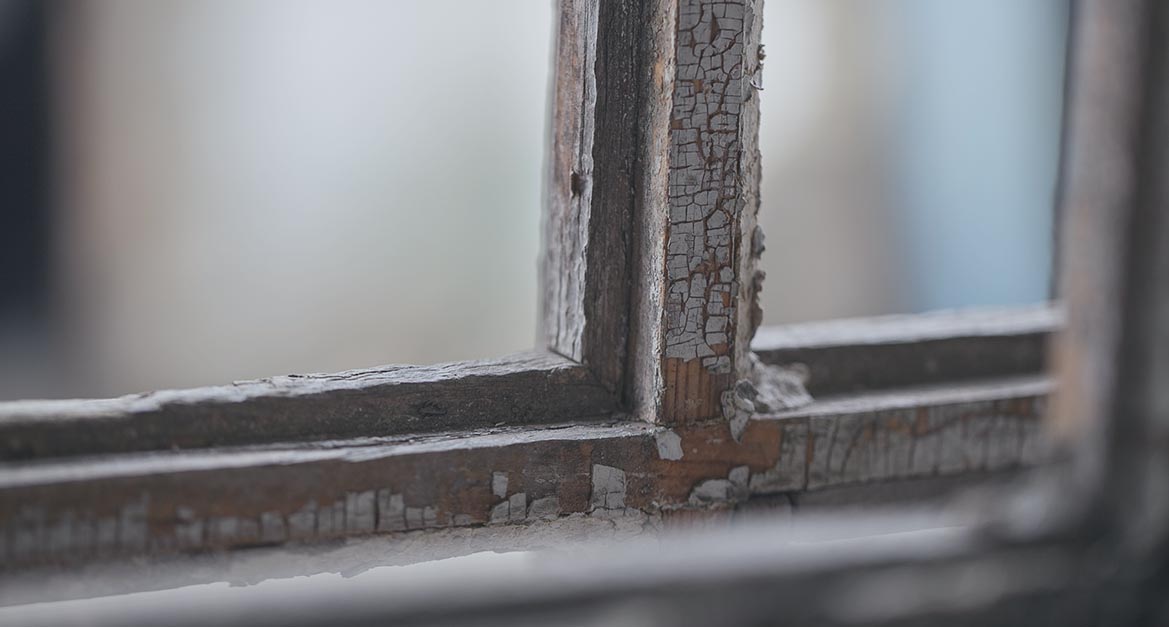My child is two years old. He recently received a routine yearly blood test. A couple of days later, I received a call from the doctor and was told that the lab results showed that my child had what the doctor described as an alarmingly elevated lead level. He said that I should come back to have him retested. In the meantime, the Department of Health of the City of New York called and subsequently came to my apartment in order to perform an inspection to determine the source of the lead poisoning. They believed that the likely source was the paint which was chipping from various areas of our apartment. This chipping was caused by wall moisture. It was a recurrent problem which we had brought to the attention of the building superintendent many times. My husband and I were exhaustively interviewed regarding any other potential sources of lead exposure. There were none. The Department of Health conducted environmental tests in my apartment by using an XRF machine. They tested the door frames, walls, closets, window wells and sills. These surfaces had chipping paint in varying degrees of severity. The Department of Health of the City of New York also performed what they called “dust wipe” tests to determine whether lead infested dust existed in the apartment. The inspector found many positive findings for lead based paint on friction surfaces and on walls and radiators as well as lead contaminated dust. The inspector told me that some of his findings with the XRF tests were “off the chart high”. Lab tests confirmed that lead contaminated dust was on the floor in my child’s bedroom. The inspector stamped the areas where lead paint was confirmed by the XRF tests to exist with a red stamp that said “LEAD PAINT”. It turns out that our apartment which is part of a large multi-family apartment complex located in the Crown Heights section of Brooklyn and which we leased as a newly married couple in 2010, was severely infested with lead based paint and lead contaminated dust.
Before my child’s diagnosis my landlord never inspected our apartment for the presence of lead based paint hazards. We notified the landlord when our household expanded with the birth of our son. There were no inspections by the landlord after his birth.
My precious child who we brought home to this apartment when he was born has become the victim of the chipping lead paint and lead contaminated dust that was in the air that we breathed and on the floor where he played. I am upset. What can I do to vindicate our legal rights? Can I sue my landlord for my child’s lead poisoning?
This is unfortunately an all too common question posed by parents whose innocent children are poisoned by the scourge of lead based paint in apartments within the City of New York. In this article, Part 2 of a series of articles on lead poisoning law, we focus on the question of a landlord’s legal liability for a child’s lead poisoning in apartments within the City of New York as distinguished from other areas of New York State.
The City of New York has a legislative framework which provides certain legal protections for children. The primary applicable statute is Local Law #1 of 2004.
Under Local Law #1 of 2004, a landlord is legally responsible to maintain apartments in which children less than six years of age are known to reside free from lead based paint hazards. The statute has potentially effective components which if complied with by property owners and managers can serve to prevent the lead poisoning of children.
Local Law #1 of 2004 does not mandate the full abatement of all lead based paint in New York City apartments. Instead the law creates a potentially effective framework for landlords to keep apartments safe from hazardous lead conditions.
Two scenarios contemplated by the law should have come into play to prevent the lead poisoning of your child.
Once your landlord became aware that a child of applicable age resided in an apartment in a multiple dwelling in the City of New York, (less than 6 years of age) he was required to take affirmative and continuing steps to maintain the apartment free of all lead hazards. The law does not require complete abatement of all potential sources of lead based paint which are intact while the landlord must conduct annual inspections in order to prevent a lead paint hazard from developing to the detriment of those present in the apartment. If a situation arose that reasonably could result in a lead paint hazard in the apartment, the property owner was required to make whatever additional inspections and corrections necessary to protect a child living in the apartment from harm through exposure to the lead hazard.
What must a New York City landlord do to prevent a lead hazard from occurring in an apartment in a multiple dwelling? He must conduct careful and comprehensive visual inspection of every single wall and baseboard surface in the apartment including painted cabinets, interiors of closets and radiators and painted pipes for any peeling, chipping or fraying paint.
What does the law require of a landlord of an apartment in which a child is known to reside within a multiple dwelling in New York City when he or she receives complaints during the year that paint is chipping? Each time the landlord receives any information which would give a reasonable person notice that the intact condition of the paint in the apartment may have changed, a new comprehensive visual inspection is required by law. The property owner must not rely on the annual inspection but is mandated by law to conduct new and comprehensive inspection as many times as reasonably necessary to prevent a lead hazard from developing.
This required inspections regimen is quite specific in the law. Local Law #1 of 2004 provides the following clear and unambiguous language mandating a standard of conduct by landlords:
“In any dwelling unit in a multiple dwelling erected prior to January first, nineteen hundred and sixty where a child of applicable age resides, …. The owner shall cause an investigation to be made for peeling paint, chewable surfaces, deteriorated subsurfaces, friction surfaces and impact surfaces. Such investigation shall be undertaken at least once a year and more often if necessary, such as when in the exercise of reasonable care, an owner knows or should have known of a condition that is reasonably foreseeable to cause a lead –based paint hazard, or an occupant makes a complaint concerning a condition that is likely to cause a lead-based paint hazard or requests an inspection, or the department issues a notice of violation or orders the correction of a violation that is likely to cause a lead-based paint hazard.”
The manner in which a landlord must determine whether a child resides in an apartment is another feature of the law. This mandate is explored in articles on this website entitled The Annual Inspection for Lead Hazards in New York City, https://frankellawfirm.com/annual-inspection-lead-hazards-new-york-city/ and Do You Want A Way To Protect Your Children and Family Members From Lead Poisoning? https://frankellawfirm.com/live-new-york-city-building-three-apartments-make-sure-respond-annual-notice-prevention-lead-based-paint-hazards/
Section 11-04 (a) of the Rules of the City of New York provides further amplification on the manner that the inspection must be conducted. The rule states that a visual inspection must be conducted and the inspection must include the inspection of “every surface in every room in the dwelling unit, including the interior of closets and cabinets”.
The potential remedial impact of these provisions are manifestly clear. In your question, several red flags pointed to the potential problem and the landlord flagrantly failed to comply with the law.
If the landlord or his agents complied with the law, annual inspections would likely have revealed the existence of the lead based paint hazards.
The notification of chipping paint through complaints to the superintendent suffice under the law as notice requiring further visual inspections of every surface in the apartment. These failures likely caused your child’s lead poisoning and the landlord is liable under the law for all damages flowing from these violations of the law.
In addition to civil liability for damages for all losses, the violations constitute a misdemeanor and are punishable by a fine of up to five hundred dollars or imprisonment for up to six months or both. The criminal element of this provision has to this writer’s knowledge never been imposed even against landlords who have been found to be repeat offenders and flagrant violators of the law.
A potent feature of Local Law #1 of 2004 which could also have prevented the lead poisoning of your child was the violation of the Turnover Provision (See 27-2056.8 of the Administrative Code of the City of New York). This section of the law requires that upon changing tenants, the landlord must remediate all lead-based paint hazards and all underlying defects as well as take many steps to abate lead hazards from friction surfaces in the apartment. This provision is potentially the most effective feature of Local Law #1 of 2004 in that it contemplates every landlord utilizing the hiatus in time between a tenant moving out and a new tenant moving in to perform certain abatement work which would render the apartment lead free in many respects. (See FAQ’s on the Frankel Law Firm website relating to turnover Issues for further amplification of the duties of landlords upon turnover of an apartment in New York City.)
Any apartment in any dwelling (other than owner occupied or the owners family) erected before 1960 which changed tenants after the effective date of the law in 2004 must undergo such a limited but important lead abatement. Since you moved into your apartment in 2010, your landlord was mandated to have effected such a lead abatement. He did not. Had this been done none of the friction surfaces in your apartment would have contained lead. The lead contaminated dust which likely poisoned your child would have been abated. Considering the XRF findings of the Department of Health that determined that leaded paint was confirmed on friction surfaces in your apartment, it is clear that your landlord violated the turnover law. This violation caused the dispersal of very harmful lead contaminated dust into the air which your family breathed. Based upon such findings it is clear that you have a valid basis to sue your landlord for all damages flowing from these violations of the law.
We welcome your legal questions for topically relevant articles in the future. Feel free to compose a question – it may be addressed in future articles. Email Question
Free Case Evaluation
Fill Out The Form Below To Find Out If You Have A Case.
Thank you for contacting us. One of our colleagues will get back to you shortly.



